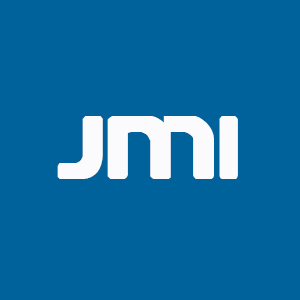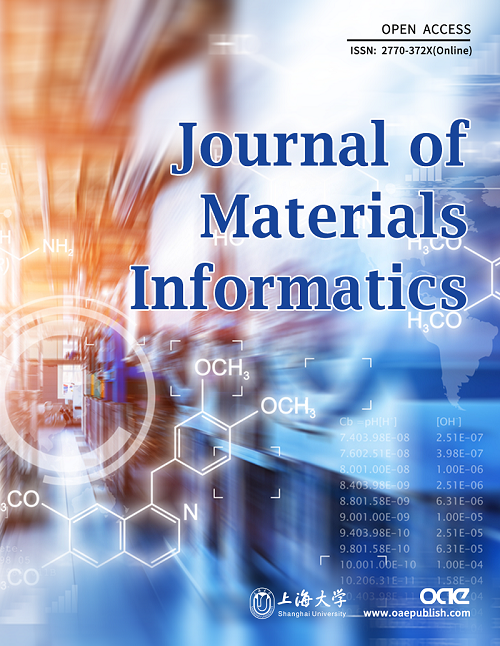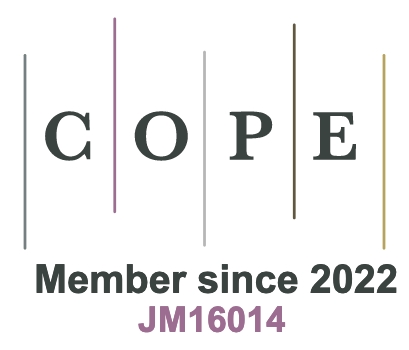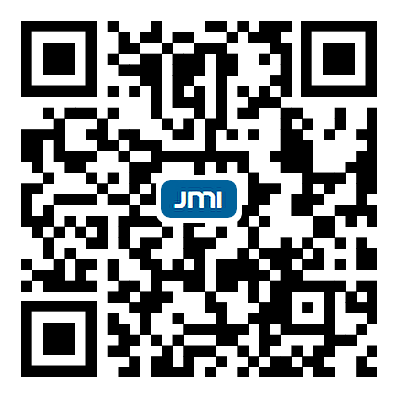REFERENCES
1. Wang, Z.; Lu, W.; An, F.; et al. High stress twinning in a compositionally complex steel of very high stacking fault energy. Nat. Commun. 2022, 13, 3598.
2. Jeong, J.; Woo, W.; Oh, K.; Kwon, S.; Koo, Y. In situ neutron diffraction study of the microstructure and tensile deformation behavior in Al-added high manganese austenitic steels. Acta. Mater. 2012, 60, 2290-9.
3. Otte, H. The formation of stacking faults in austenite and its relation to martensite. Acta. Metall. 1957, 5, 614-27.
4. Wong, S. L.; Madivala, M.; Prahl, U.; Roters, F.; Raabe, D. A crystal plasticity model for twinning- and transformation-induced plasticity. Acta. Mater. 2016, 118, 140-51.
5. Du, C. Application of Austenitic stainless steel in industry. Process Equip Piping 2003;54-7+4. Available from: https://kns.cnki.net/kcms2/article/abstract?v=ufuULlVWCsP94M9oRcpza9IACD4Y12DTBg3Sk2BMrJSDxqS3XZ8gEqE_FwfMraM7fEaSP2vSWE9y-Djer6RVOJ5jasv_m_Zw3uc2nM-iIoDRkDp2sJMSBJWzYnWuUcAuukhmLUi-B6YRzYH_Bd_eqMlHOqmn6UG42Q_jYQJymMXkABxomz6y_f8RqGj9uLvW&uniplatform=NZKPT&language=CHS. (in Chinese) [Last accessed on 4 Jan 2025]
6. Vitos, L.; Nilsson, J.; Johansson, B. Alloying effects on the stacking fault energy in austenitic stainless steels from first-principles theory. Acta. Mater. 2006, 54, 3821-6.
7. Dong, Z.; Li, W.; Chai, G.; Vitos, L. Strong temperature - dependence of Ni -alloying influence on the stacking fault energy in austenitic stainless steel. Scr. Mater. 2020, 178, 438-41.
8. Chong, X.; Shang, S. L.; Krajewski, A. M.; et al. Correlation analysis of materials properties by machine learning: illustrated with stacking fault energy from first-principles calculations in dilute fcc-based alloys. J. Phys. Condens. Matter. 2021, 33, 295702.
9. Lang, D.; Huang, W. Stacking fault energy in Fe-Mn-C-Si-Cr high manganese steels and experimental investigation. Foundry Technol 2021;42:575-8. (in Chinese) Available from: http://211.67.182.139/KCMS/detail/detail.aspx?filename=ZZJS202107006&dbcode=CJFD&dbname=DKFX2021. [Last accessed on 4 Jan 2025].
10. Lee, S. J.; Jung, Y. S.; Baik, S. I.; et al. The effect of nitrogen on the stacking fault energy in Fe–15Mn–2Cr–0.6C–xN twinning-induced plasticity steels. ScrMater 2014, 92, 23-6.
11. Whelan, M. J. Dislocation interactions in face-centred cubic metals, with particular reference to stainless steel. Proc. R. Soc. Lond. A. 1959, 249, 114-37.
12. Abrassart, F. Stress-induced γ→α martensitic transformation in two carbon stainless steels. Application to trip steels. Metall. Trans. 1973, 4, 2205-16.
13. Yonezawa, T.; Suzuki, K.; Ooki, S.; Hashimoto, A. The effect of chemical composition and heat treatment conditions on stacking fault energy for Fe-Cr-Ni austenitic stainless steel. Metall. Mater. Trans. A. 2013, 44, 5884-96.
14. Reed, R. P.; Schramm, R. E. Relationship between stacking-fault energy and x-ray measurements of stacking-fault probability and microstrain. J. Appl. Phys. 1974, 45, 4705-11.
15. Schramm, R. E.; Reed, R. P. Stacking fault energies of seven commercial austenitic stainless steels. Metall. Trans. A. 1975, 6, 1345-51.
16. Rhodes, C. G.; Thompson, A. W. The composition dependence of stacking fault energy in austenitic stainless steels. Metall. Trans. A. 1977, 8, 1901-6.
17. Ojima, M.; Adachi, Y.; Tomota, Y.; Ikeda, K.; Kamiyama, T.; Katada, Y. Work hardening mechanism in high nitrogen austenitic steel studied by in situ neutron diffraction and in situ electron backscattering diffraction. Mater. Sci. Eng. A. 2009, 527, 16-24.
18. de Bellefon G, van Duysen J, Sridharan K. Composition-dependence of stacking fault energy in austenitic stainless steels through linear regression with random intercepts. J. Nucl. Mater. 2017, 492, 227-30.
19. Olson, G. B.; Cohen, M. A general mechanism of martensitic nucleation: Part I. General concepts and the FCC → HCP transformation. Metall. Trans. A. 1976, 7, 1897-904.
20. Yang, W. S.; Wan, C. M. The influence of aluminium content to the stacking fault energy in Fe-Mn-Al-C alloy system. J. Mater. Sci. 1990, 25, 1821-3.
21. Allain, S.; Chateau, J.; Bouaziz, O.; Migot, S.; Guelton, N. Correlations between the calculated stacking fault energy and the plasticity mechanisms in Fe–Mn–C alloys. Mater. Sci. Eng. A. 2004, 387-9, 158-62.
22. Xiong, R.; Peng, H.; Si, H.; Zhang, W.; Wen, Y. Thermodynamic calculation of stacking fault energy of the Fe–Mn–Si–C high manganese steels. Mater. Sci. Eng. A. 2014, 598, 376-86.
23. Masumura, T.; Nakada, N.; Tsuchiyama, T.; Takaki, S.; Koyano, T.; Adachi, K. The difference in thermal and mechanical stabilities of austenite between carbon- and nitrogen-added metastable austenitic stainless steels. Acta. Mater. 2015, 84, 330-8.
24. Aristeidakis, J. S.; Haidemenopoulos, G. N. Composition and processing design of medium-Mn steels based on CALPHAD, SFE modeling, and genetic optimization. Acta. Mater. 2020, 193, 291-310.
26. Geng, X.; Wang, F.; Wu, H.; et al. Data-driven and artificial intelligence accelerated steel material research and intelligent manufacturing technology. Mater. Genome. Eng. Adv. 2023, 1, e10.
27. Zhu, L.; Luo, Q.; Chen, Q.; et al. Prediction of ultimate tensile strength of Al-Si alloys based on multimodal fusion learning. Mater. Genome. Eng. Adv. 2024, 2, e26.
28. Chaudhary, N.; Abu-Odeh, A.; Karaman, I.; Arróyave, R. A data-driven machine learning approach to predicting stacking faulting energy in austenitic steels. J. Mater. Sci. 2017, 52, 11048-76.
29. Khan, T. Z.; Kirk, T.; Vazquez, G.; et al. Towards stacking fault energy engineering in FCC high entropy alloys. Acta. Mater. 2022, 224, 117472.
30. Li, H.; Wang, X.; Song, Y.; Li, Y.; Li, X.; Ji, Y. Physical metallurgy guided machine learning to predict hot deformation mechanism of stainless steel. Mater. Today. Commun. 2023, 36, 106779.
31. Shen, C.; Wang, C.; Rivera-díaz-del-castillo, P. E.; et al. Discovery of marageing steels: machine learning vs. physical metallurgical modelling. J. Mater. Sci. Technol. 2021, 87, 258-68.
32. Cui, C.; Cao, G.; Li, X.; Gao, Z.; Liu, J.; Liu, Z. A strategy combining machine learning and physical metallurgical principles to predict mechanical properties for hot rolled Ti micro-alloyed steels. J. Mater. Process. Technol. 2023, 311, 117810.
33. Shen, C.; Wang, C.; Wei, X.; Li, Y.; van, Z. S.; Xu, W. Physical metallurgy-guided machine learning and artificial intelligent design of ultrahigh-strength stainless steel. Acta. Mater. 2019, 179, 201-14.
34. Basha, S. S.; Dubey, S. R.; Pulabaigari, V.; Mukherjee, S. Impact of fully connected layers on performance of convolutional neural networks for image classification. Neurocomputing 2020, 378, 112-9.
35. Wei, X.; van, Z. S.; Jia, Z.; Wang, C.; Xu, W. On the use of transfer modeling to design new steels with excellent rotating bending fatigue resistance even in the case of very small calibration datasets. Acta. Mater. 2022, 235, 118103.
36. Jain, A.; Nandakumar, K.; Ross, A. Score normalization in multimodal biometric systems. Pattern. Recognit. 2005, 38, 2270-85.
37. Liu, X.; Xu, P.; Zhao, J.; Lu, W.; Li, M.; Wang, G. Material machine learning for alloys: applications, challenges and perspectives. J. Alloys. Compd. 2022, 921, 165984.
38. Ilyas, N.; Shahzad, A.; Kim, K. Convolutional-neural network-based image crowd counting: review, categorization, analysis, and performance evaluation. Sensors 2019, 20, 43.
39. Kim, Y.; Kim, T.; Ergün, T. The instability of the Pearson correlation coefficient in the presence of coincidental outliers. Financ. Res. Lett. 2015, 13, 243-57.
40. Jeon, J.; Seo, N.; Son, S. B.; Lee, S.; Jung, M. Application of machine learning algorithms and SHAP for prediction and feature analysis of tempered martensite hardness in low-alloy steels. Metals 2021, 11, 1159.








